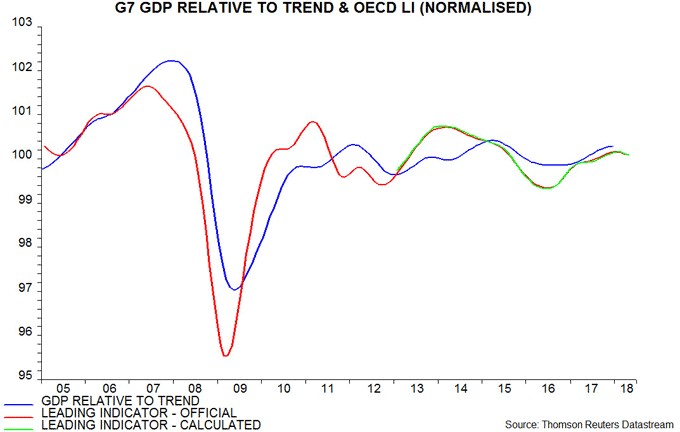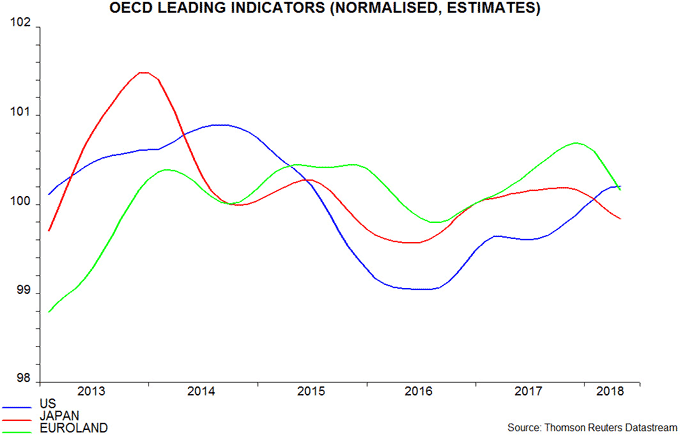
Janus Henderson: Leading indicators still softening
The OECD’s G7 composite leading indicator continues to soften, supporting the forecast here, based on monetary trends, of a global economic slowdown.
20.06.2018 | 09:26 Uhr
The OECD’s G7 composite leading indicator continues to soften, supporting the forecast here, based on monetary trends, of a global economic slowdown.
The OECD will publish an April update of its leading indicators on 13 June but most of the component information is already available, allowing an independent calculation.
The first chart shows the ratio of G7 GDP to the OECD’s estimate of trend together with the "normalised" (i.e. trend-adjusted) leading indicator – both official and independently-calculated. The indicator is estimated to have declined again in April, increasing the likelihood that the recent peak marked a significant turning point. The indicator, that is, has switched from signalling above-trend economic expansion in 2017 to below-trend now.

The estimated April decline in the indicator was again driven by European countries and Japan but the rise in the US indicator slowed, suggesting that it is approaching a turning point – second chart.

The components of the US indicator are: housing starts, durable goods orders, consumer sentiment, the ISM manufacturing purchasing managers’ index, average weekly hours worked in manufacturing, share prices (NYSE composite) and the slope of the yield curve (10-year Treasury yield minus effective fed funds rate). All components enter as deviations from their estimated trends. The recent slowdown in the indicator reflects negative contributions from the survey measures (consumer sentiment, ISM PMI), share prices and housing starts; its continued rise has been driven by the “hard” manufacturing components – durable goods orders and average weekly hours.
The OECD country indicators do not, in most cases, include a monetary aggregate, so they provide an independent, though less timely, cross-check of monetary signals. Another drawback relative to the monetary data is that the indicators can sometimes be revised significantly, mainly reflecting changes to the estimated trends in the components as new information is incorporated.




Diesen Beitrag teilen: